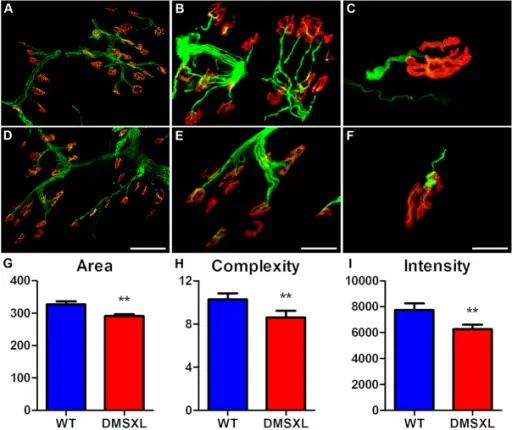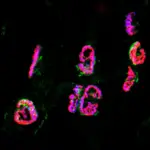Toxin mediated diseases of the neuromuscular junction are diseases caused by toxins at the neuromuscular junction affecting the activities that occur there. One example is botulism.
What are Toxin Mediated Diseases of the Neuromuscular Junction?

Toxin Mediated Diseases of the Neuromuscular Junction. Pathological changes in neuromuscular junctions of DMSXL mice. (A–F) Representative micrographs of diaphragm muscle cryostat sections that were stained with rhodamine α-BTX (red) and neurofilament antibody (green). (A–C) In wild-type control mice practically all the EPs are innervated by branches of axons. (D–F) In DMSXL mice, EPs with no contact to axon terminals are easily identified. (C, F) A single EP is shown at higher magnification. In DMSXL mice (D–F), the EPs have a smaller size and less complex shape than in control mice (A–C). The mean surface area of EPs, the shape complexity, and the density of acetylcholine receptors on post-synaptic membranes labeled with rhodamine α-BTX are represented in the three histograms. More than 1500 EPs were measured from each mouse line (n=7). Statistical analysis of the results reveals that all three parameters are significantly (**P<0.01) smaller in DMSXL mice compared with wild-type control mice. Scale bars: 100 μm (A,D); 50 μm (B,E); 20 μm (C,F). Functional and histopathological identification of the respiratory failure in a DMSXL transgenic mouse model of myotonic dystrophy: Panaite PA, Kuntzer T, Gourdon G, Lobrinus JA, Barakat-Walter I - Disease models & mechanisms (2012). Not altered. CC.


